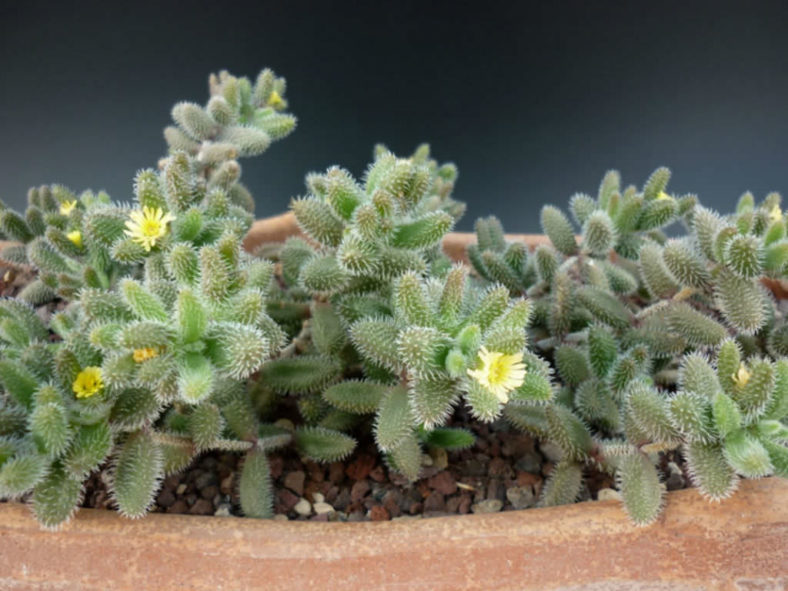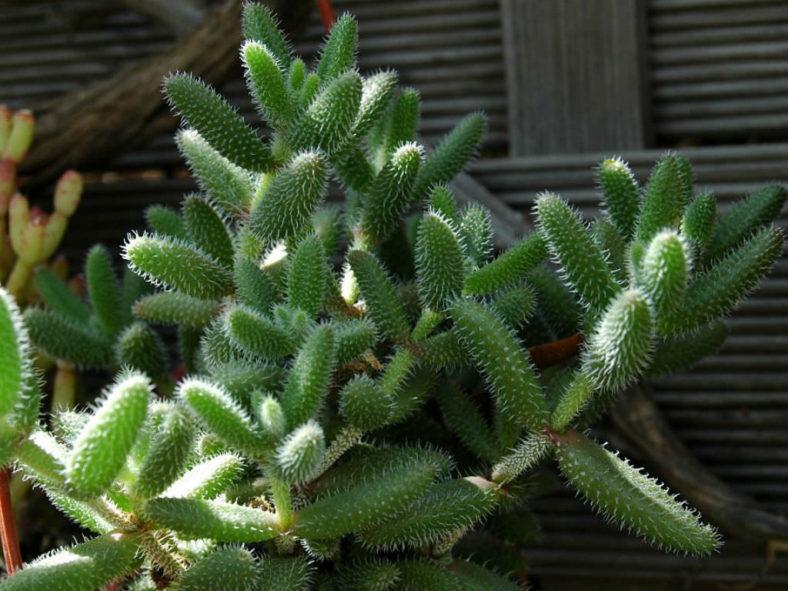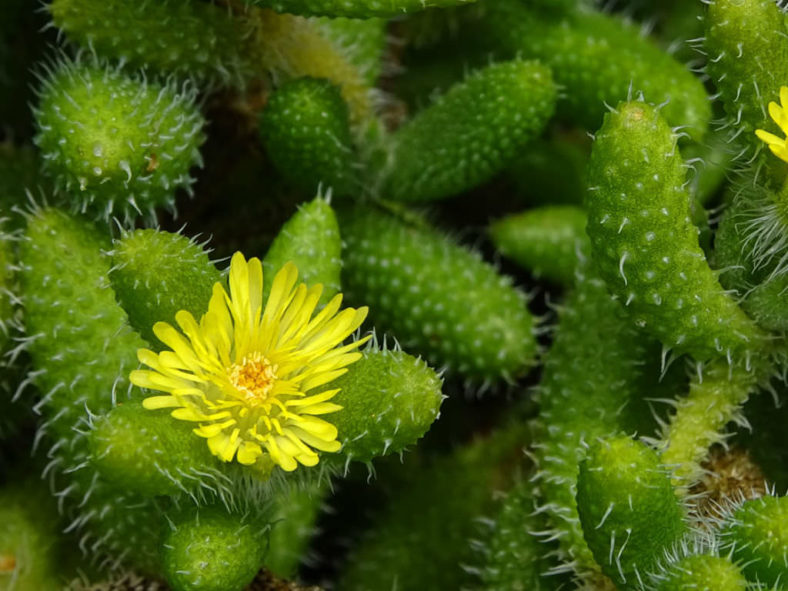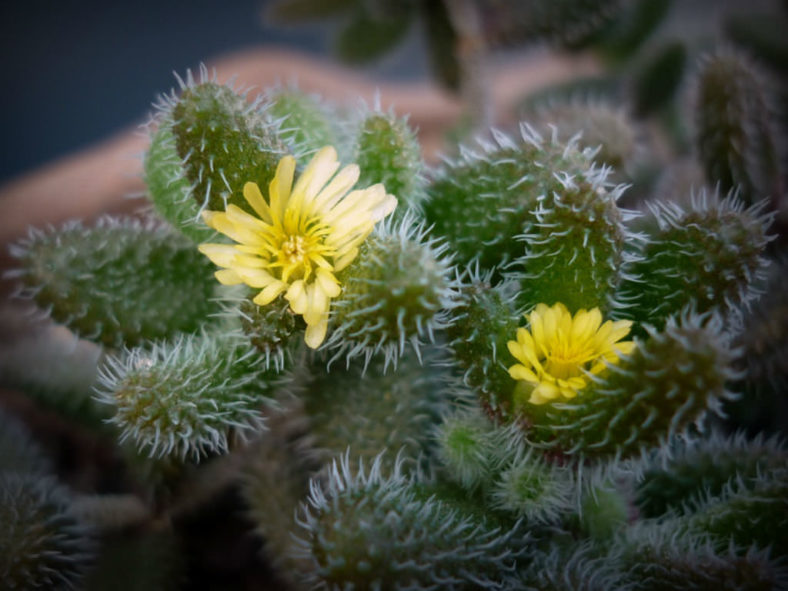Scientific Name
Delosperma echinatum (Lam.) Schwantes
Common Name(s)
Pickle Plant, Ice Plant
Synonym(s)
Drosanthemum pruinosum, Mesembryanthemum echinatum
Scientific Classification
Family: Aizoaceae
Subfamily: Ruschioideae
Tribe: Ruschieae
Genus: Delosperma
Etymology
The specific epithet "echinatum" (pronounced "ek-in-AY-tum") means "prickly" and refers to the leaves of this species, which are covered with white bristles, giving it a spiny appearance.
Origin
Delosperma echinatum is native to South Africa. It grows in open areas in bushy scrub from the Greater Addo Elephant National Park southwest to Kariega and Gqeberha in the Eastern Cape province.
Description
Delosperma echinatum is a dwarf succulent shrublet with slender, upright or trailing stems that bear pairs of bright green leaves covered with bladder cells ending in a white, spine-like bristle. Although it can reach a height of up to 18 inches (45 cm), it usually grows smaller. The leaves are ovoid, slightly triangular, and can measure up to 1 inch (2.5 cm) in length.
From late spring to summer, Delosperma echinatum produces solitary flowers that range from white to pale yellow or yellow. The flowers appear at the tip of the stems and can reach a diameter of 0.8 inches (2 cm). The fruits are pale brown, mostly 5-locular capsules.

Hardiness
USDA hardiness zones 7a to 10b: from 0°F (-17.8°C) to 40°F (4.4°C).
How to Grow and Care
Delosperma plants grow in USDA plant hardiness zones 5 to 9 and will bloom for most of the summer and fall. Their foliage is mostly evergreen, and because of this, they make a great year-round ground cover. However, while the plant is evergreen, it often has some dieback of foliage in the winter.
These plants prefer full sun but can tolerate light shade in the garden. Because they are succulents, they do not tolerate wet soil but do well in poor soils. Wet soil, especially in winter, is likely to kill the plants. However, this plant can become invasive in areas where the soil stays consistently dry, so it is best to consider this when planting it.
Delosperma can be propagated by division, cuttings, or seeds. If propagating by division, dividing the plants in the spring is best. Cuttings can be taken anytime in the spring, summer, or fall. When grown by seeds, scatter them on the soil's surface and do not cover them, as they need light to germinate.
See more at How to Grow and Care for Delosperma.
Links
- Back to genus Delosperma
- Succupedia: Browse succulents by Scientific Name, Common Name, Genus, Family, USDA Hardiness Zone, Origin, or cacti by Genus
Photo Gallery
Click on a photo to see a larger version.


